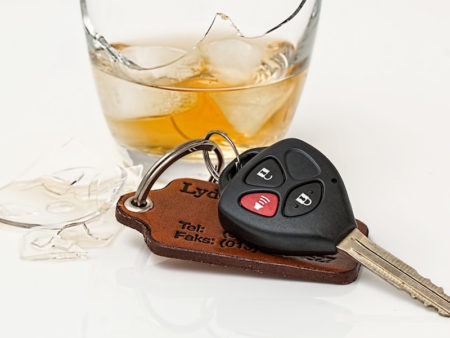Drink-drive fatalities reach eight-year high
The number of drink-drive fatalities reached an eight-year high in 2017, leading to renewed calls for a zero-tolerance drink-drive limit, increased education on the risks of drink-driving and greater policing.
The latest drink-drive provisional estimates from the Department for Transport indicate that between 240 and 330 people were killed in accidents in Great Britain where at least one driver was over the drink-drive limit, with a central estimate of 290 deaths. It’s the highest provisional estimate of fatalities since 2009.
Although the DfT said the change is not statistically significant, the figures have caused concern among road safety stakeholders.
Josh Harris, director of campaigns at road safety charity Brake, said: “Our current drink-drive limit gives a false impression that it is acceptable to mix alcohol and driving, which couldn’t be further from the truth.
“Even very small amounts of alcohol dramatically affect your ability to drive safely.
“Decisive action is needed to end this blight on our roads and prevent the needless loss of life.
“Brake is calling for the Government to implement an effective zero-tolerance drink-drive limit, making clear to drivers that not a drop of alcohol is safe.”
The AA and the RAC also slammed the figures, but called for an increased police presence to tackle the issue.
Jack Cousens, head of roads policy for the AA, said: “We are extremely concerned that theses provisional figures show that drink-drive fatalities will hit an eight-year high.
“As well as rolling the dice with their own lives, they put the lives of their passengers and other road users in jeopardy too. Drink-driving is socially unacceptable and we encourage family, friends and others concerned to report any suspected drink-drive activity.
“As much as individuals need to take responsibility, we need more cops in cars to deter and catch offenders long before they are added to road death statistics. From our own research, more than a third (37%) say that drink drivers are unlikely to be caught due to a lack of police presence in their area.
RAC road safety spokesman Pete Williams also expressed concern: “Looking at these estimated figures there could be an increase of up to a 33% in the number of road deaths resulting from an accident where one or more drivers was over the drink-drive limit. This is a serious cause for alarm and reflects a worrying change in attitude by a number of drivers who are prepared to risk their own life and that of others by drinking and driving. Anyone who has lost a loved-one in a drink-driving accident will testify to how devastating and needless this is.
“Research for the latest RAC Report on Motoring revealed the proportion of drivers who admitted to driving when they thought or knew they were over the legal limit shortly after drinking has doubled from 8% to 12%. Significantly, a quarter (24%) of all drivers aged 25 to 44 admitted to this and almost a third (32%) of London drivers said they had done this.
“Fears about other drivers being under the influence of drink is now a top-five issue for motorists with 27% rating it as a concern, up from 22% in 2016.
“With the reduced number of roads policing officers it appears more drivers are thinking they can get away with drinking and driving. However this is a major issue for society and we need to refocus our efforts to raise awareness of the risks.”
However, the DfT estimates show a slight fall in the number of people killed or injured in drink-drive accidents. An estimated 8,660 people were killed or injured when at least one driver was over the drink-drive limit. This represents a reduction of 4% from 9,040 in 2016, and is reverting to a similar level to 2015. The total number of accidents where at least one driver was over the alcohol limit fell by 6% to 5,730 in 2017.













